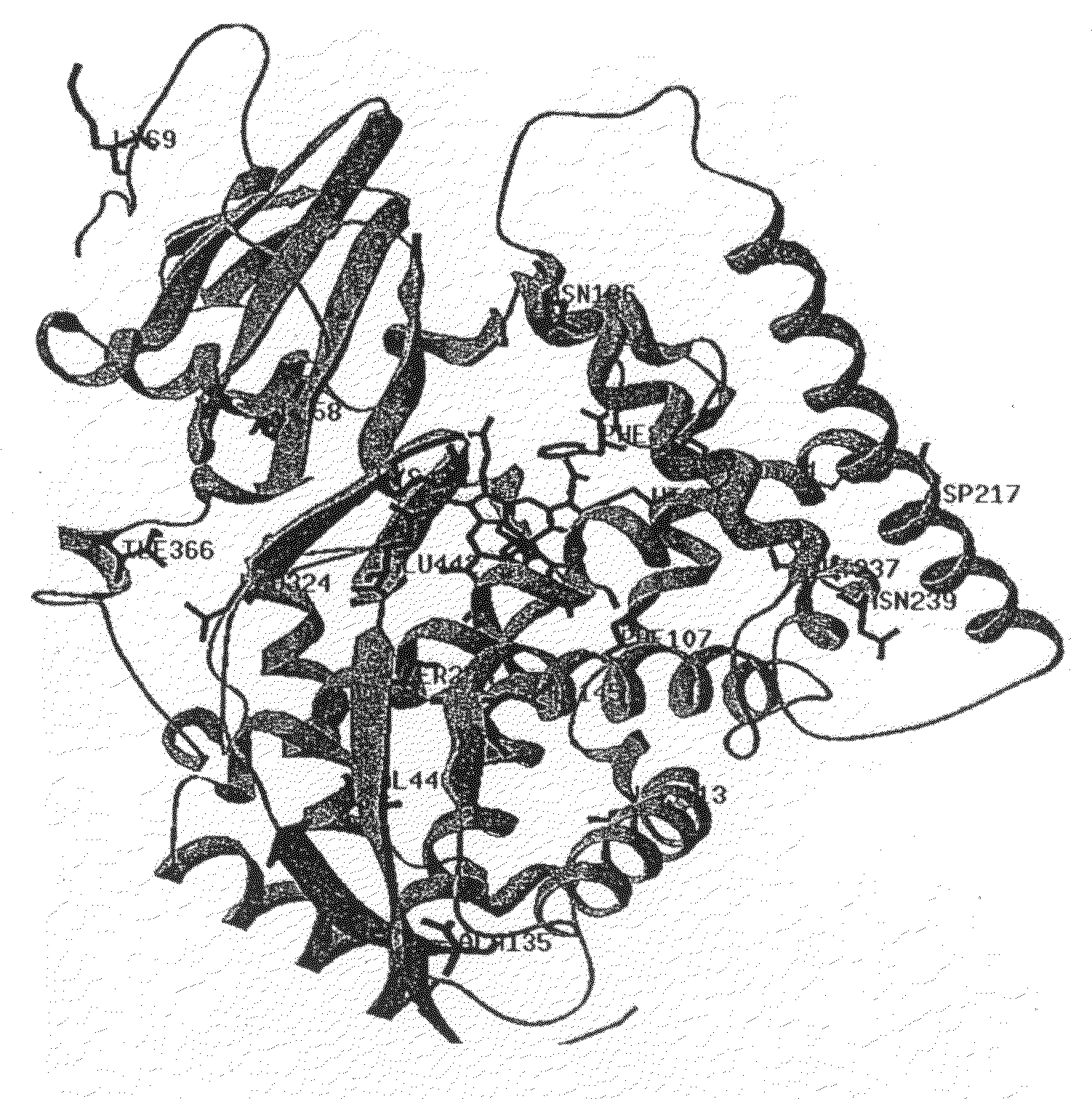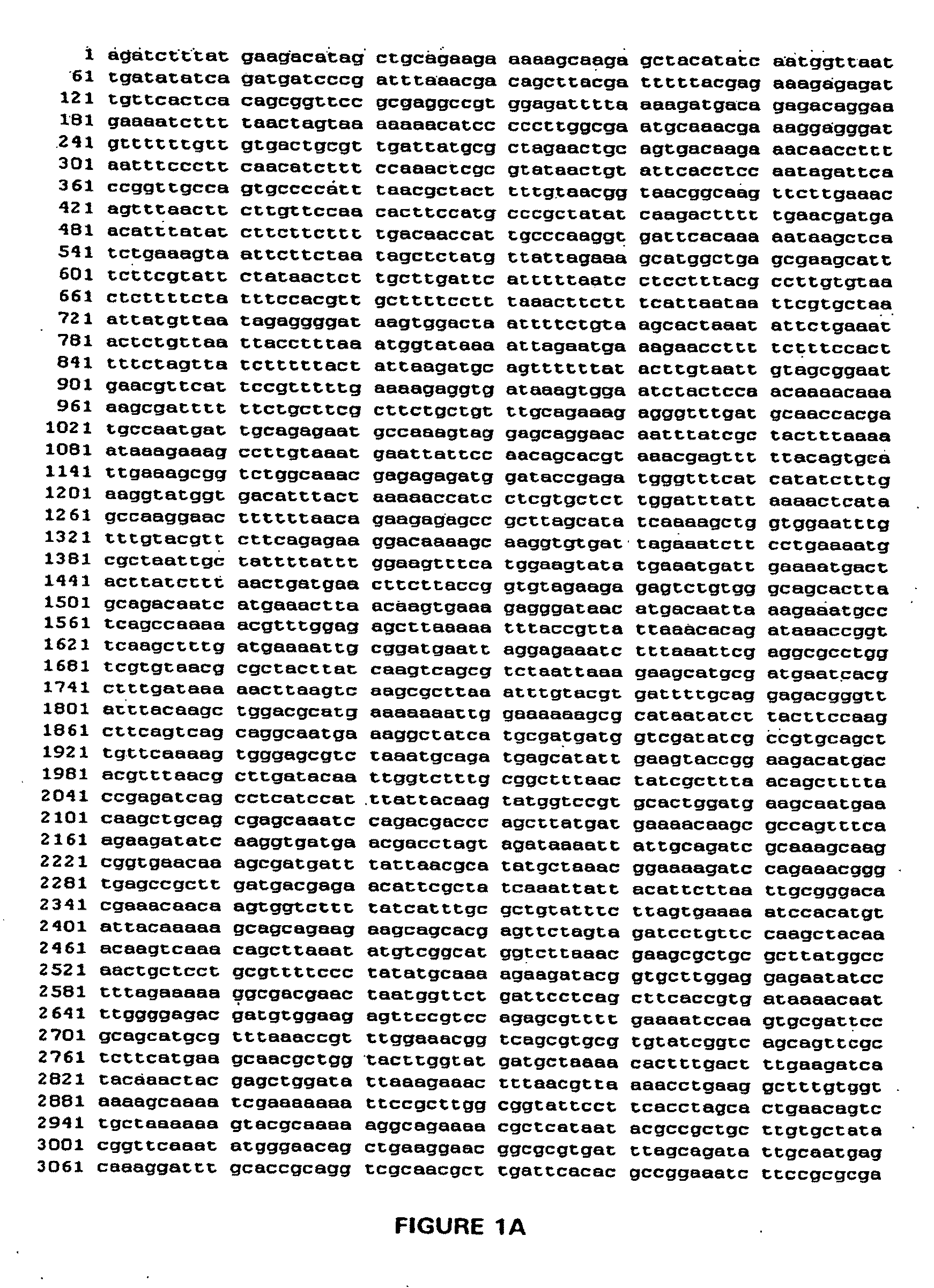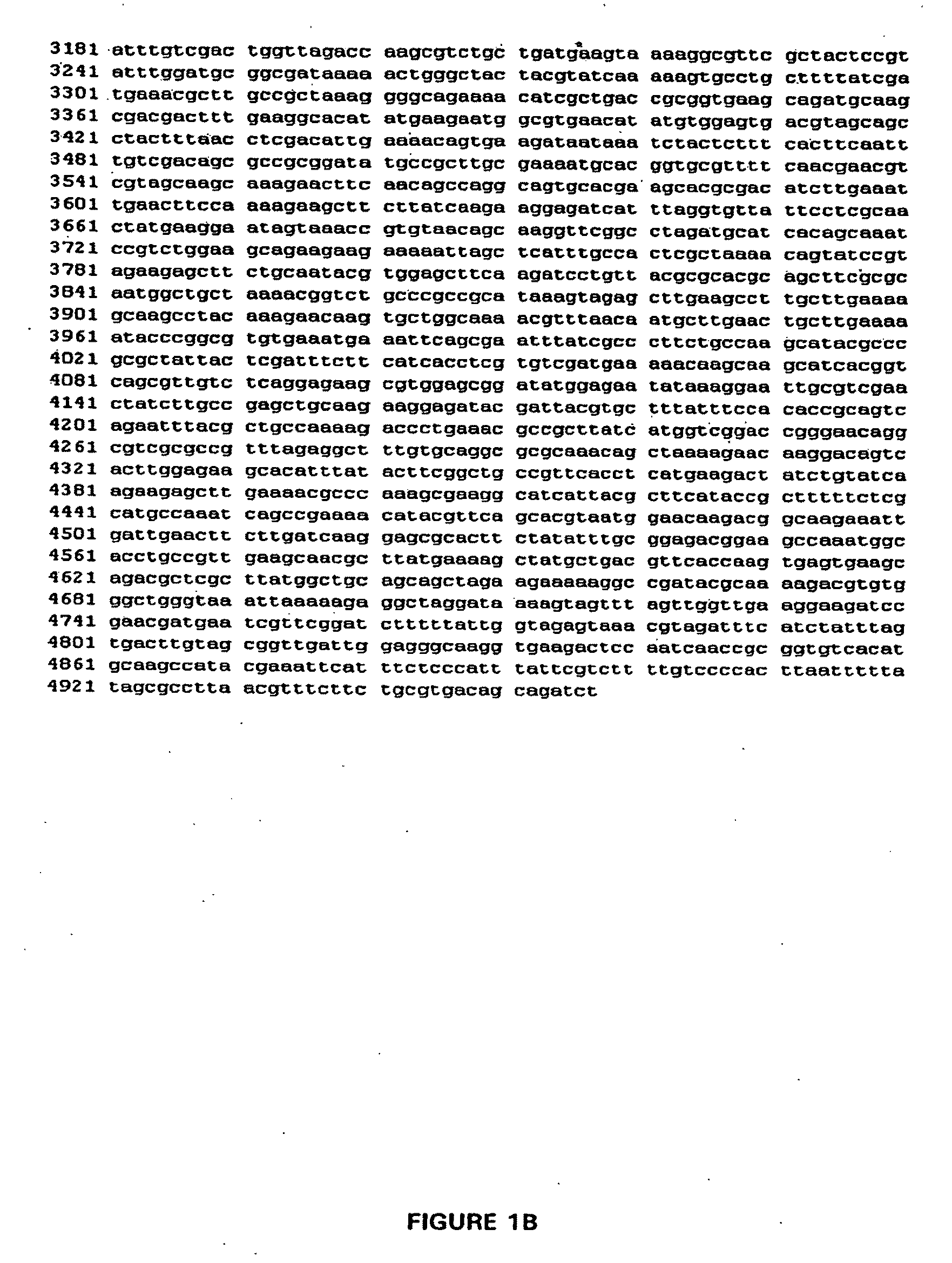Thermostable peroxide-driven cytochrome P450 oxygenase variants and methods of use
a technology of cytochrome p450 and variants, applied in the field of variants of cytochrome p450 oxygenase, can solve the problems of prone to over-oxidation reactions, difficult to achieve difficult to insertion of oxygen into unactivated carbon-hydrogen bond (hydroxylation) with high selectivity and high yield, so as to improve the thermostability of variants and improve the ability to use
- Summary
- Abstract
- Description
- Claims
- Application Information
AI Technical Summary
Benefits of technology
Problems solved by technology
Method used
Image
Examples
example 1
Cytochrome P450 BM-3 Heme Domain Mutants More Active in Peroxide-Driven Hydroxylation
[0121]This example demonstrates the improved activity of P450 BM-3 mutants using hydrogen peroxide instead of NADPH.
Materials and Methods
[0122]All chemical reagents were procured from Aldrich, Sigma, or Fluka. Enzymes used for DNA manipulations were purchased from New England Biolabs, Stratagene, and Boehringer Mannheim, unless otherwise noted.
[0123]All P450 enzymes described here were expressed in catalase-deficient E. coli (Nakagawa et al., 1996) using the isopropyl-β-D-thiogalactopyranoside (IPTG)-inducible pCWori+vector (Barnes et al., 1991), which is under the control of the double Ptac promoter and contains an ampicillin resistance coding region. Expression was accomplished by growth in terrific broth (TB) supplemented with 0.5 mM thiamine, trace elements (Joo et al., 1999), 1 mM δ-aminolevulinic acid, and 0.5-1 mM IPTG at 30° C. for ˜18 hrs.
Library Generation
[0124]With the exception of one ge...
example 2
Improved Hydrogen Peroxide-Driven Hydroxylation by Evolved Cytochrome P450 BM-3 Heme Domain
[0157]This Example describes the discovery of novel cytochrome P450 BM-3 variants that use hydrogen peroxide (H2O2) for substrate hydroxylation more efficiently than the wild-type enzyme.
Materials and Methods
[0158]The same materials and methods were used in this Example as those described in Example 1. However, in Example 2, StEP recombination was carried out with error-prone mutants. A 50 μl PCR reaction contained ˜160 ng total template DNA (comprised of approximately equal concentrations of the seven mutant genes), 0.2 mM dNTPs, 5 pmole outside primers, 5 μl Qiagen Hotstar buffer (containing 15 mM Mg2+), and 2.5 U HotstarTaq polymerase. PCR was performed in a PTC200 thermocycler (MJ Research). The temperature protocol was as follows: (hot start) 95° C. for 3 min, followed by 100 cycles of 94° C. for 30 sec and 58° C. for 8 sec. Genes from seven mutants were used and resulted in some improvem...
example 3
Improved Peroxide-Driven Hydroxylation by Evolved Cytochrome P450 BM-3 Heme Domain
[0164]This Example describes a novel cytochrome P450 BM-3 variant that use hydrogen peroxide (H2O2) for substrate hydroxylation more efficiently than the wild-type enzyme.
Methods and Results
[0165]Further rounds of directed evolution to improve peroxide shunt pathway activity were carried out starting with mutant “stepB3”. Error-prone PCR was used to generate mutant libraries, and screening was performed as described above using 1 mM H2O2. After two rounds of evolution mutant “21B3” was isolated.
[0166]After reacting wild-type, F87A and 21B3 with laurate, the reaction products were extracted, dried, and derivatized to the trimethylsilyl esters and ethers. The regiospecificity was quite different for the wild-type compared to F87A and 21B3. The F87A mutation appears to broaden regiospecificity and shift hydroxylation away from the terminal positions. Whereas the wild-type BM-3 typically oxidizes fatty aci...
PUM
| Property | Measurement | Unit |
|---|---|---|
| melting temperature | aaaaa | aaaaa |
| temperature | aaaaa | aaaaa |
| temperature | aaaaa | aaaaa |
Abstract
Description
Claims
Application Information
 Login to View More
Login to View More - R&D
- Intellectual Property
- Life Sciences
- Materials
- Tech Scout
- Unparalleled Data Quality
- Higher Quality Content
- 60% Fewer Hallucinations
Browse by: Latest US Patents, China's latest patents, Technical Efficacy Thesaurus, Application Domain, Technology Topic, Popular Technical Reports.
© 2025 PatSnap. All rights reserved.Legal|Privacy policy|Modern Slavery Act Transparency Statement|Sitemap|About US| Contact US: help@patsnap.com



